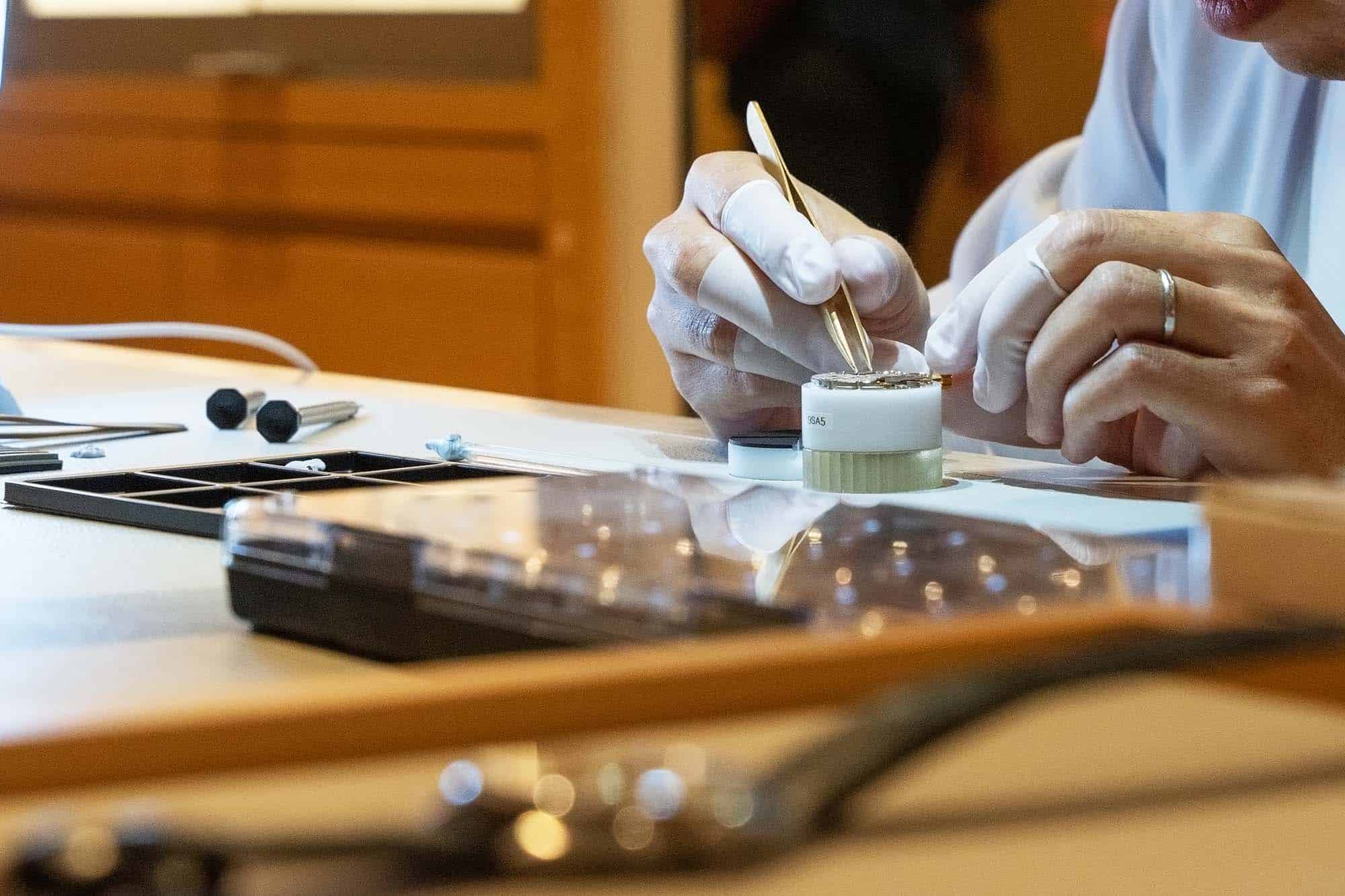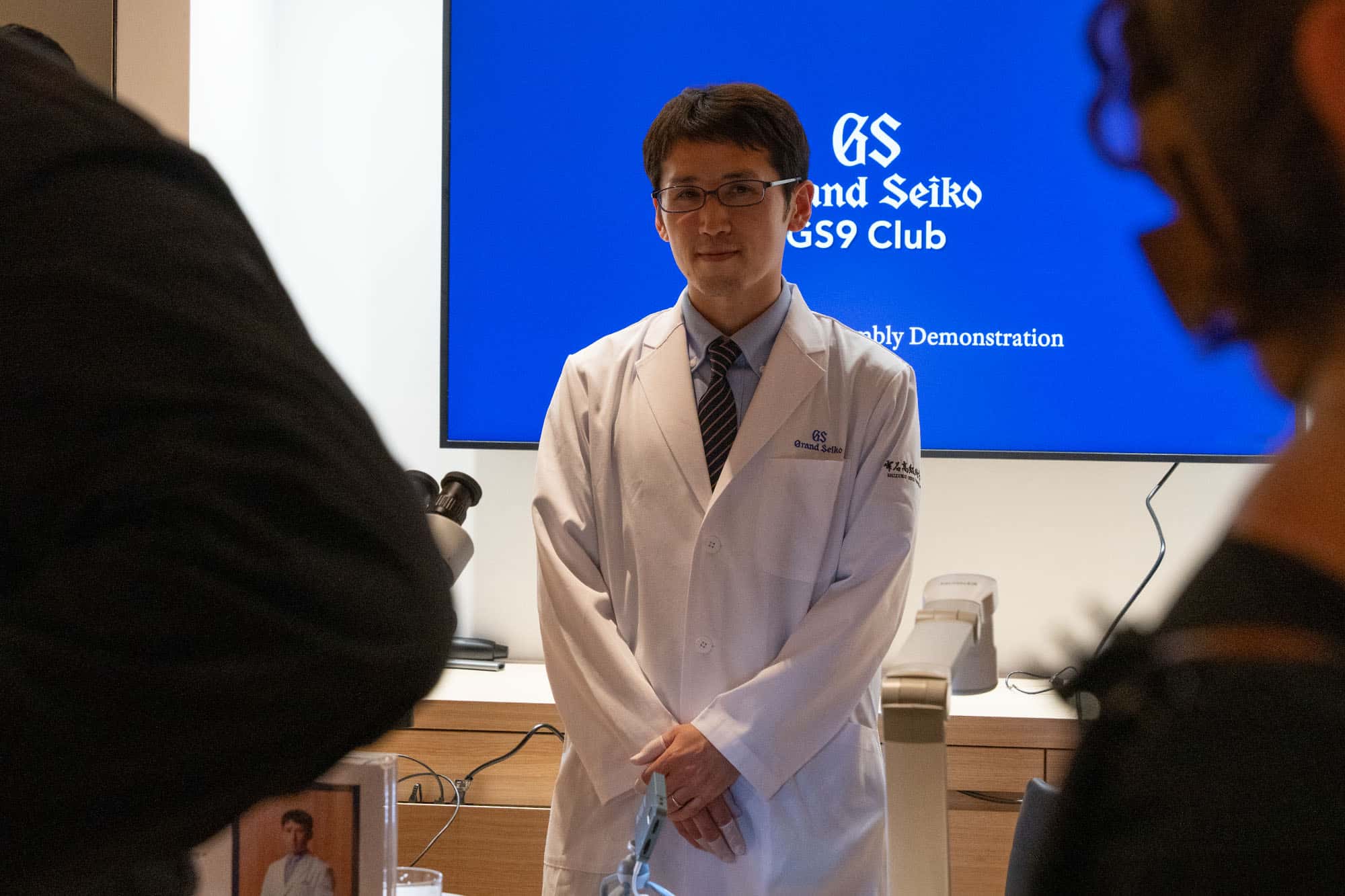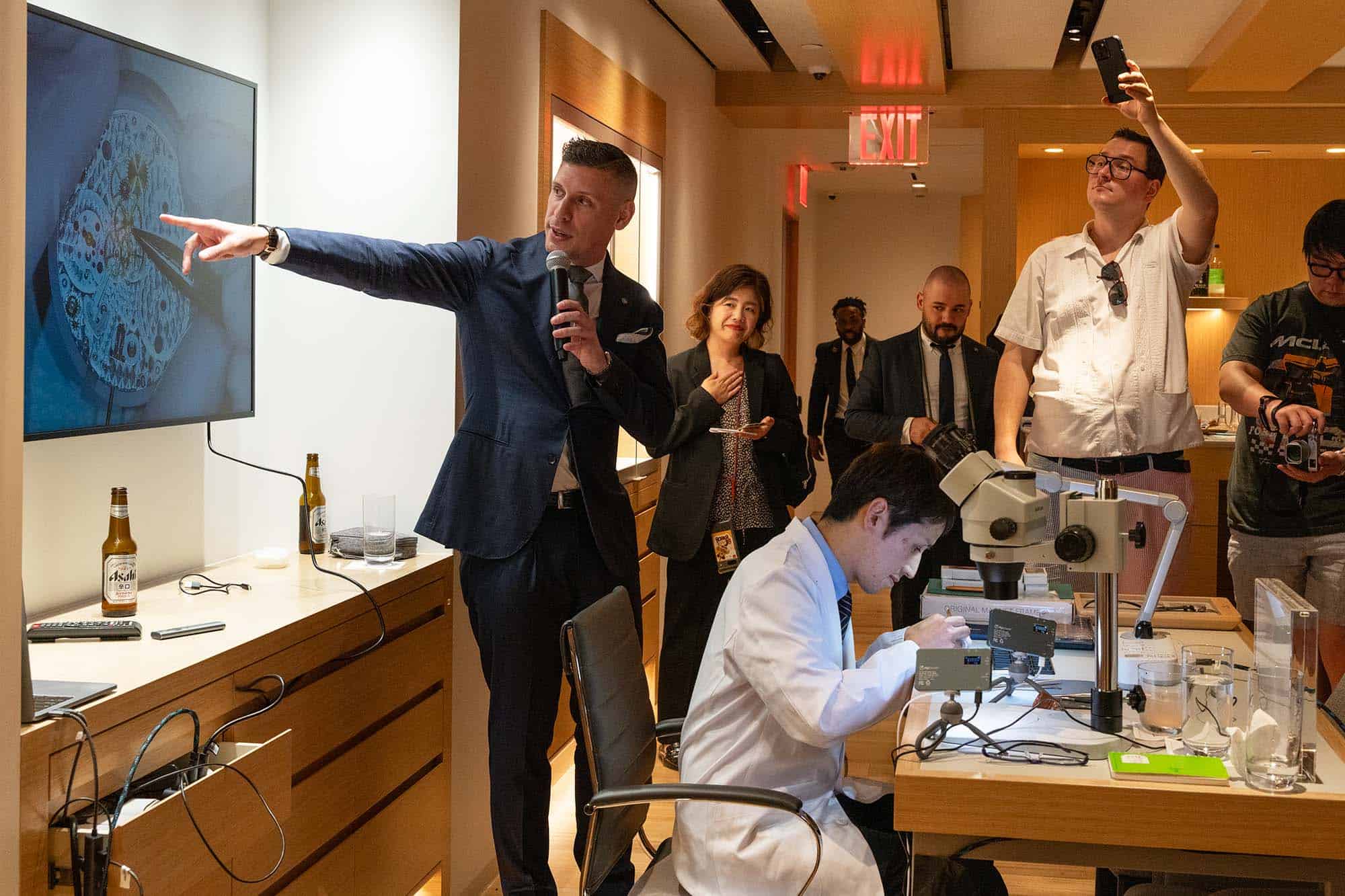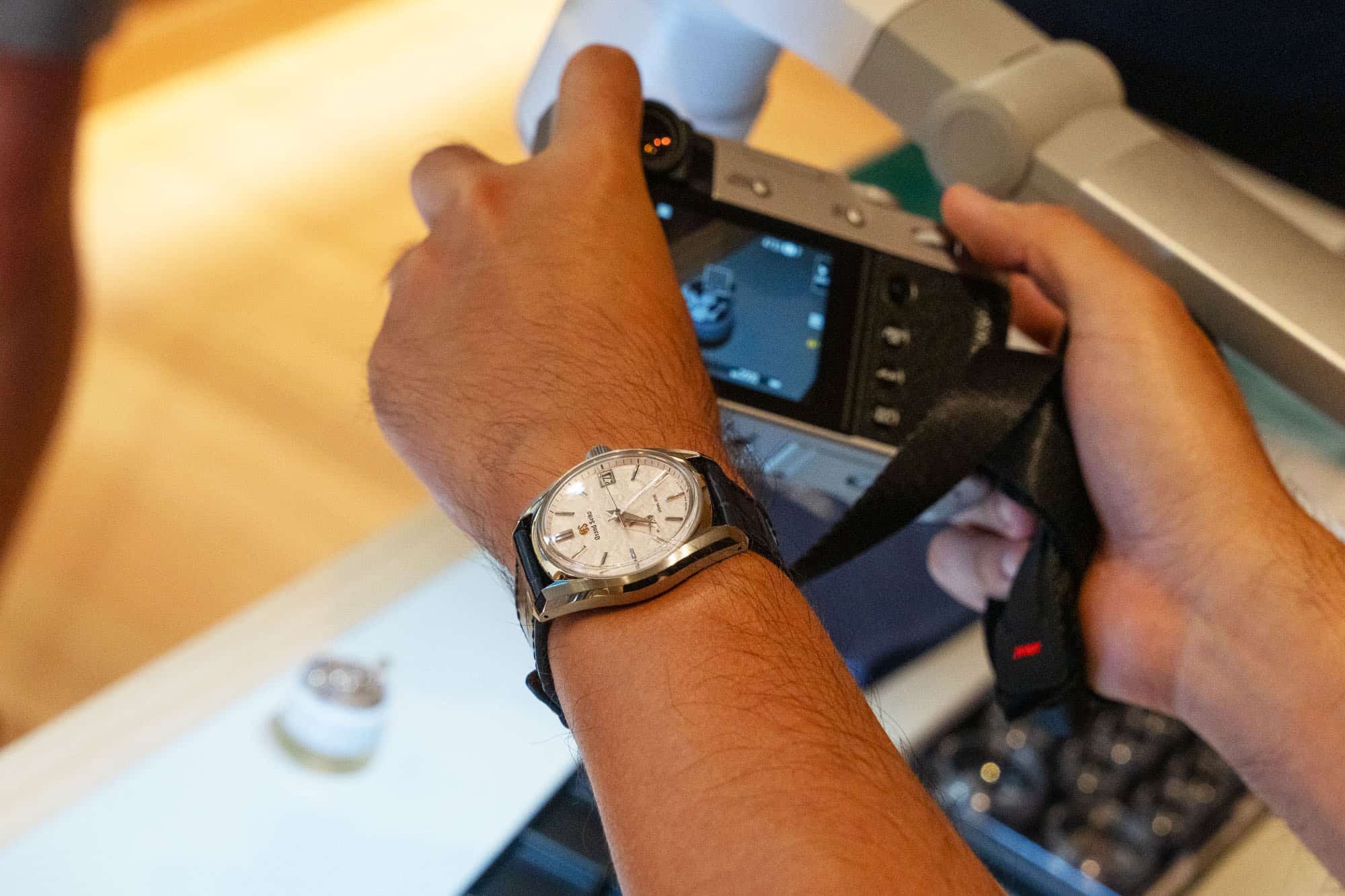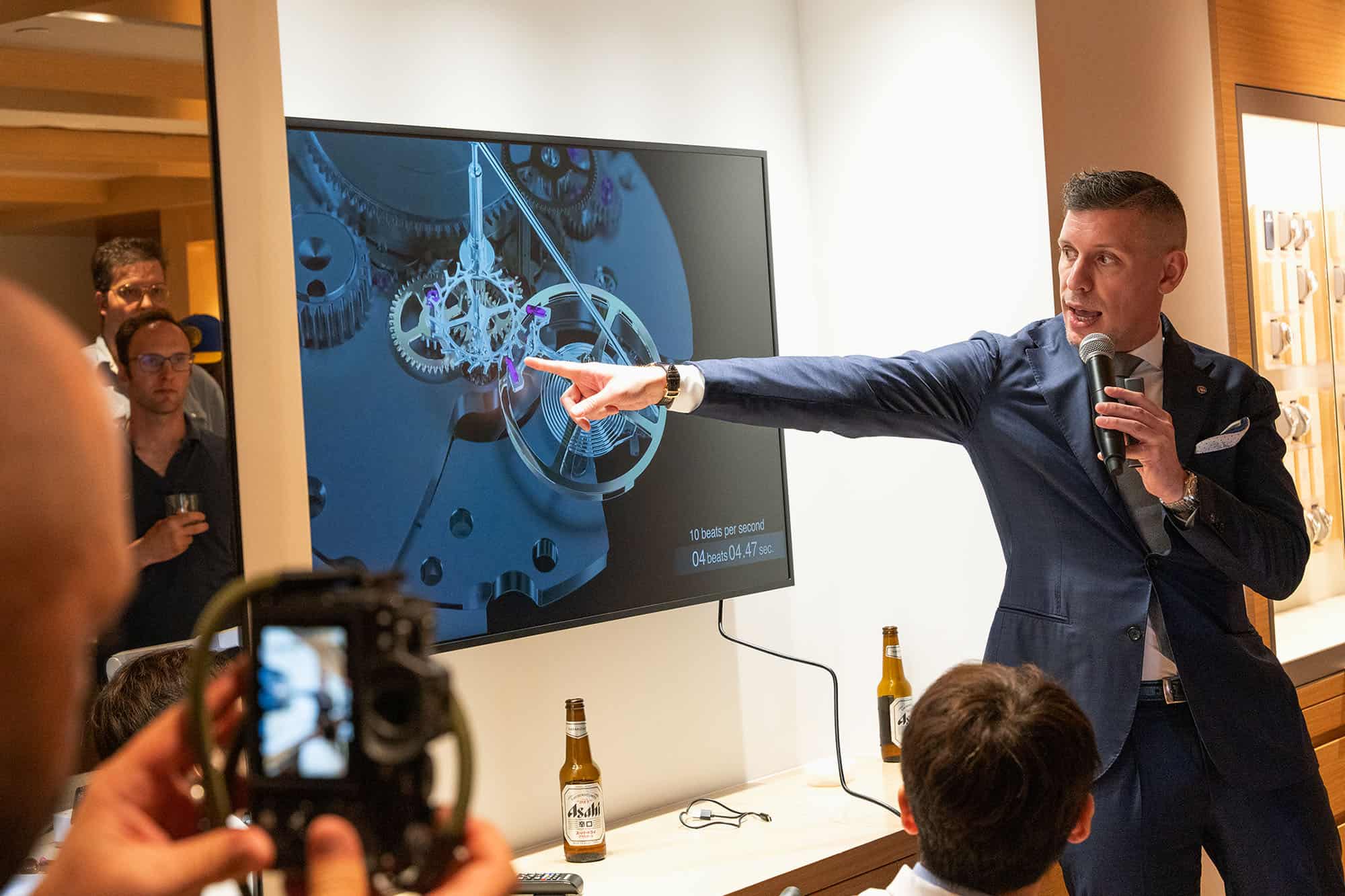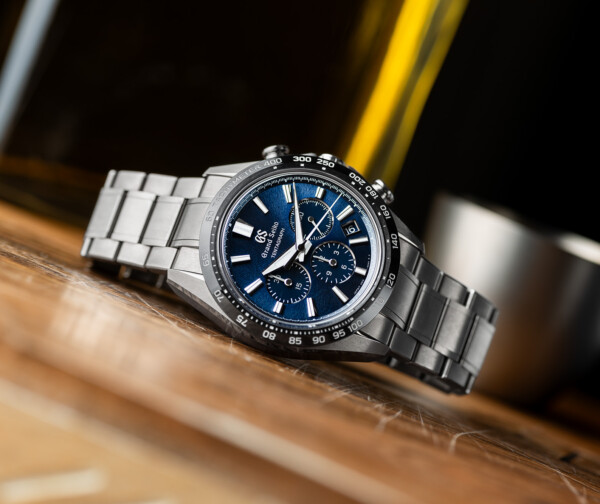I’ve always had a fascination for peeking behind the curtain. Whether it was tearing apart broken electronics, rebuilding car engines, or opening the caseback of my first Seiko, I’ve always wanted to see and know how things work. As I’ve gone deeper into the horology rabbit hole, I’ve become more interested in the physical process of assembling a movement. While I can watch any number of YouTube videos, there’s something special about seeing it done in person, especially when you get to watch a Grand Seiko Watchmaker at work. Last week, I was invited to Grand Seiko’s boutique for a live assembly of their new 9SA4 movement, a high-beat, manually wound high frequency movement featuring Grand Seiko’s proprietary dual impulse escapement and 80 hours of power reserve. If you’d like to learn more about the 9SA4 and how it was created from the 9SA5, Zach Kazan covers that in detail here.
This event was hosted at Grand Seiko’s Madison Avenue boutique (we celebrated the grand opening of this boutique in March, click here for the recap article) which features a gorgeous open concept main level, and an intimate lower level they’ve dubbed “The Cellar”. Unlike any cellar I’ve ever been in, this lower level features multiple lounge spaces, a full bar, a dedicated presentation space and, of course, plenty of watches. You’ll also find various items of cultural significance from the towns surrounding the Grand Seiko Studio Shizukuishi, which inspire the design of many Grand Seiko timepieces.
For the event, Grand Seiko hired two skilled chefs, who were preparing a variety of fresh sushi which paired beautifully with a curated selection of cocktails and Japanese beer. After everyone had their fill, we were treated to a short presentation on the 9SA5 by Joe Kirk, Grand Seiko’s Brand Curator and Director of Marketing, and how it was used as the foundation for the 9SA4. Afterwards, watch maker Hiroomi Suzuki built a complete 9SA4 before our eyes.
Browsing through the gallery of event photos, you’ll notice that I don’t have any photos of Suzuki-san using a loupe or other magnification as he built this movement without any assistance, and often had to slow his progress so Joe could accurately narrate the steps that he was performing. In total, Suzuki-san successfully placed 200+ components in the movement in just under 20 minutes, which was absolutely amazing to watch. Once completed, guests were allowed to see the completed movement up close, as well as handle a completed SLGW002, appropriately dubbed the “Birch Bark” due to its dial texture.





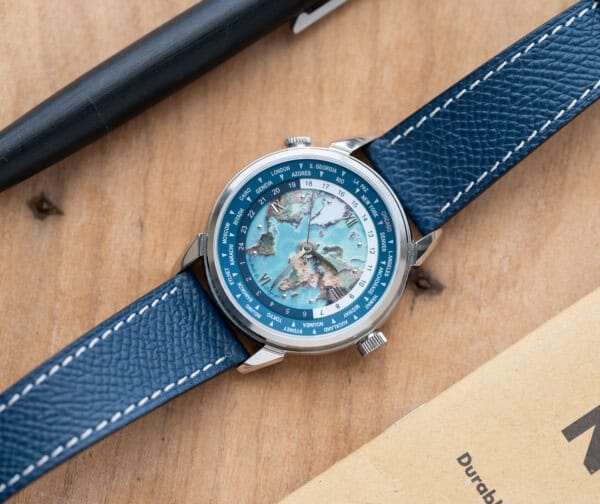



 Featured Videos
Featured Videos




